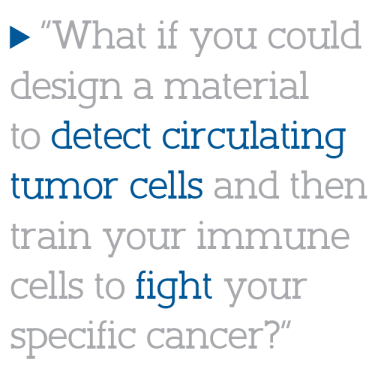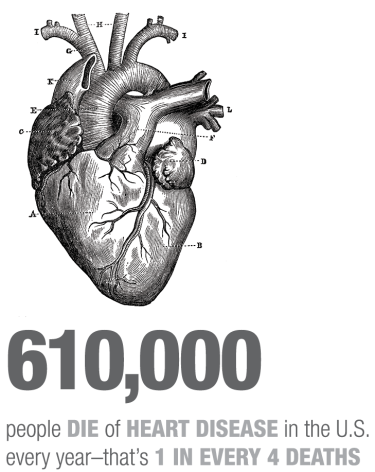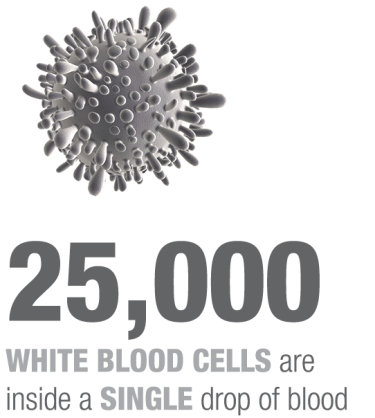 Everyone knows that no two humans are alike, but Kristi Anseth, the Tisone Professor of Chemical and Biological Engineering, is focusing her recent workon making sure biomaterials “know” it also. It’s this kind of thinking that has helped lead Anseth and her group on an odyssey to transform the medical landscape.
Everyone knows that no two humans are alike, but Kristi Anseth, the Tisone Professor of Chemical and Biological Engineering, is focusing her recent workon making sure biomaterials “know” it also. It’s this kind of thinking that has helped lead Anseth and her group on an odyssey to transform the medical landscape.
Getting Personal
 “The notion of a personalized biomaterial means that the material itself is custom designed to the patient, and it can even respond to differences in individuals,” explains Anseth, who was recently inducted into the National Academy of Inventors. “We hear about personalized medicine, but biomaterials and medical devices also need to get more personalized.”
“The notion of a personalized biomaterial means that the material itself is custom designed to the patient, and it can even respond to differences in individuals,” explains Anseth, who was recently inducted into the National Academy of Inventors. “We hear about personalized medicine, but biomaterials and medical devices also need to get more personalized.”
Her group specializes in light-sensitive chemistries, which can bring aspects such as 3-D printing into their work. “All of a sudden, we can make materials with custom-tailored sizes, shapes and even material properties for an individual,” she says. As one example, they can custom make biomaterials into a scaffold that is in the shape of a heart valve and then embed it with cells that allow it to grow into a “living” tissue over time. This technology is especially important for children, as the engineered valve has the potential to grow as the child grows.
But beyond just prototyping, Anseth envisions dynamic personalized materials, where the chemistry matters. “What if you could design a material to detect circulating tumor cells and then train your immune cells to fight your  specific cancer?” she says. Or, “what if you could culture your own cells in the lab in personalized microenvironments that mimic your heart tissue and then test thousands of drugs to treat your cardiac disease before ever taking a single pill?”
specific cancer?” she says. Or, “what if you could culture your own cells in the lab in personalized microenvironments that mimic your heart tissue and then test thousands of drugs to treat your cardiac disease before ever taking a single pill?”
She says her group has a clear interest in understanding how to regenerate tissues that are patient-specific. “If we want to help repair somebody’s heart muscle after a heart attack, then we’re interested in understanding how that person’s cells respond and use their cells to regrow or remodel tissue … bringing cells into the biomaterial itself. Or using your own cartilage cells to regenerate cartilage tissue that is yours.”
Supporting Others’ Visions
Beyond her own passions, Anseth is also supportive of student interests. For example, one of her former doctoral students, Balaji Sridhar, who is simultaneously completing medical school at the Anschutz Medical Campus, wanted to utilize the Anseth lab biomaterials to develop nanoshields for vaccines. The nanomaterials are engineered to keep medicines stable, even when that can’t be refrigerated.
Anseth explains that her role included guidance in such areas as vetting ideas, suggesting people for  collaborations and encouraging him to apply for competitions to fund his ideas. Today, Sridhar is the CEO of Nanoly Bioscience, a Boulder-based startup company currently developing a polymer that will enable vaccines to survive without refrigeration so they can be delivered to hard-to-reach areas of the world.
collaborations and encouraging him to apply for competitions to fund his ideas. Today, Sridhar is the CEO of Nanoly Bioscience, a Boulder-based startup company currently developing a polymer that will enable vaccines to survive without refrigeration so they can be delivered to hard-to-reach areas of the world.
“One of the best things about being a faculty member is that you have the opportunity to interact with exceptional students at CU and help them achieve their goals,” says Anseth.
Anseth is among a very select group of scientists and engineers who belong to all three branches of the National Academies: the National Academy of Sciences, the National Academy of Engineering and the National Academy of Medicine. She is a Distinguished Professor, a Howard Hughes Medical Institute Investigator, a Hazel Barnes Prize winner and a member of the Colorado Women’s Hall of Fame

